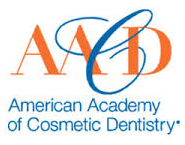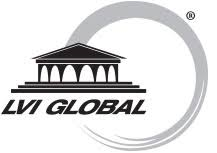A Step-by-step Guide to Laser Dentistry

Although laser dentistry has been widely available as an alternative dental procedure for the last few decades, it is still seen as a novel concept to many patients. LASER is an acronym for "Light Amplification by Stimulated Emission of Radiation." Lasers are recommended by dentists as a more painless, comfortable, and effective form of therapy requiring a reduced recovery time.
What are the benefits of laser dentistry?
Lasers are light beams that are extra-concentrated. The high energy is used to remove dead, untreatable soft oral tissues. It can also be used in teeth whitening procedures. As an alternative to drilling and surgery, laser dentistry is a popular option that is relatively painless with minimal side effects to the teeth, gums, or enamel.
No drills or scalpels
Dentists use scalpels and drills in some procedures to make tissue incisions, inspiring stress and fear in many patients. Laser dentistry is less invasive and relatively painless, eliminating much of the patient's worry.
Better tooth preservation
The removal of decay in the tooth restoration procedure can adversely affect the remaining teeth. However, the use of soft lasers in place of drills can help avoid the regular side effects of decay removal processes.
Less bleeding and swelling
Many dental procedures result in swelling or bleeding after the conclusion of the treatment. However, laser dentistry is gentle on the mouth and has a shorter recovery period.
How does a laser work?
Lasers treatments depend on an interaction between the laser and the tissue, with the specific interaction dependent on the energy, exposure, focal spot size, frequency, power, power density, pulses, tissue consistency, and wavelength of the laser. Lasers are particularly beneficial in the use of treating gum disease, enabling the painless and effective killing of bacteria while preserving the teeth.
1. Measurements
The first step in laser dentistry treatments is a measurement of the depths of periodontal pockets. Using a small ruler, the dentist can measure in millimeters how much attachment has been lost.
2. Removal of bacteria
Laser light is passed over the surface areas of the teeth in pulses to kill bacteria and remove diseased tissue. This process is safe and comfortable for the patient, as the healthy tissue is untouched.
3. Removal of tartar
Ultrasonic scaling instruments remove tartar, also known as calculus, from the teeth' root surfaces.
4. Formation of clots
The second round of laser pulse is applied to the treated areas to stimulate the tooth's bone, root, and tissue. This triggers the formation of a clot and starts the healing process.
5. Compression of tissue
Laser dentistry enables recompression of tissue against the tooth surface, which stimulates healing without the need for stitches.
6. Bite adjustment
The dentist will evaluate and adjust the bite to ensure there is no trauma to the teeth following any laser procedure, particularly when there is bone loss involved.
Conclusion
While laser dentistry has been around for years, patients are still learning about the many benefits of this type of treatment. Interested patients should ask their dentist about the pain-free experience and faster healing times that can come from the use of lasers.
Request an appointment here: https://www.thegalleryofsmiles.com or call Midtown Dental - The Gallery of Smiles at (713) 979-4127 for an appointment in our Houston office.
Check out what others are saying about our dental services on Yelp: Laser Dentistry in Houston, TX.
Recent Posts
Curious about laser dentistry? Read on to learn more about this type of treatment. Medical professionals may modify or remove tiny quantities of tissue using lasers. While laser surgery has numerous applications outside of dentistry, the vast majority of patients had never ever heard of laser dentistry until they needed it. Dentists employ lasers for…
Correcting mouth issues with a beam of light might sound like science-fiction, but laser dentistry is a present, common, and effective practice. Dental lasers are less noisy and less invasive than traditional drills. They often cause less anxiety and fear during dental procedures and reduce healing times and pain as well. With all this in…
Laser dentists can treat cavities by cutting away the decayed portion of the tooth, which reduces the need for fillings and other traditional cavity treatments. This procedure, known as soft tissue laser surgery, was developed in 1996 and has become one of the most popular ways to treat cavities and other oral health issues. Here's…
A dental bridge is a reliable, effective solution for tooth loss, as it offers functional and aesthetic benefits. This dental restoration helps improve chewing, speech, and overall oral health while maintaining the smile’s natural structure. Patients interested in bridges as tooth replacements can benefit from learning more about their basics, placement process, and long-term care…










